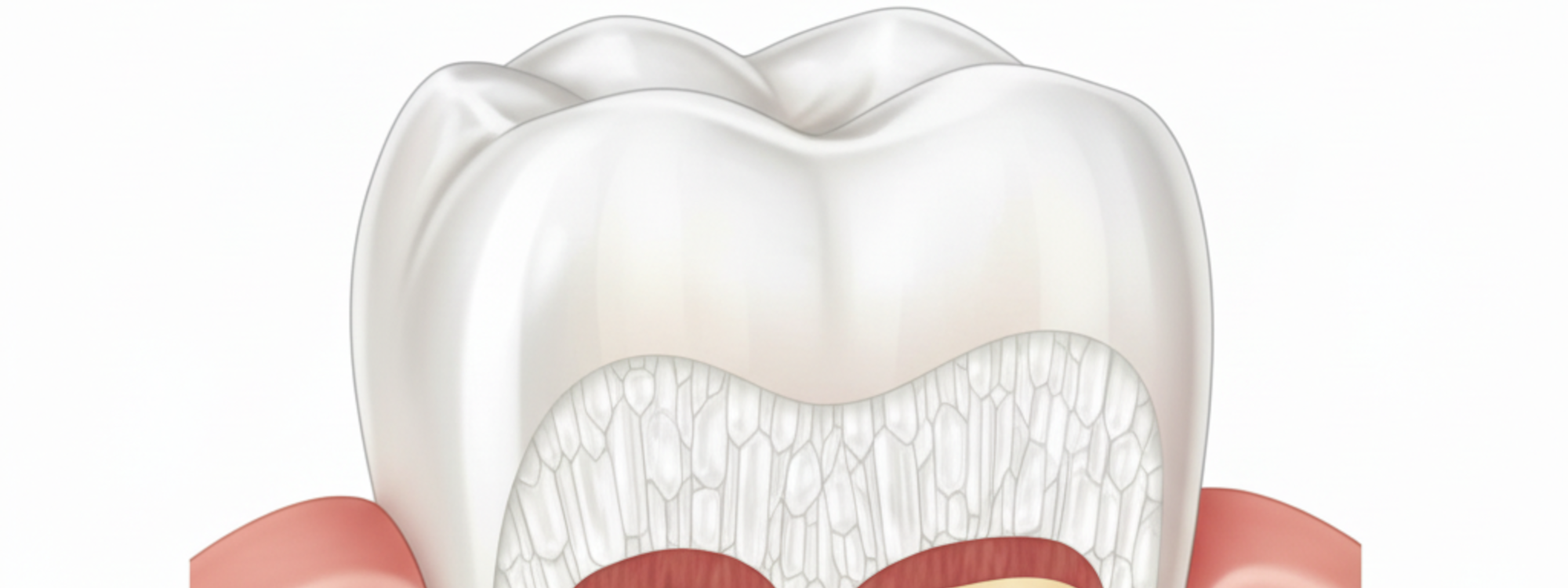
Dental enamel, the outermost layer of our teeth, plays a key role in our oral health. This hard, mineralized tissue protects our teeth from wear and tear and the acid attacks of harmful bacteria. Despite its hardness, enamel is highly fragile and sensitive to acids, making it susceptible to damage
Dental enamel is a highly mineralized, translucent white tissue, making it the hardest substance in our body. It covers the exposed part of the tooth, acting as a protective shield against wear and acid attacks from harmful bacteria.
The composition of enamel is predominantly inorganic, with 95-96% of it being made up of hydroxyapatite, a crystalline form of calcium phosphate. The remaining 4-5% consists of water and organic components, primarily proteins.
Enamel, also known as the adamantine substance, is made up of elongated polyhedral prisms, held together by a highly mineralized interplasmic substance. These prisms, which are rod-shaped and arranged parallel to each other, run from the deep surface to the external surface of the enamel. They are perpendicular to the dentin at depth, become wavy in the central section, and finally perpendicular to the tooth surface.
Despite its hardness, enamel does not contain cells or blood vessels, making it an avascular tissue. This characteristic, coupled with its high sensitivity to acids, makes it susceptible to damage from harmful oral bacteria, leading to tooth decay.
The color of our teeth is heavily influenced by the translucency and shade of the dental enamel. The enamel's shades range from white to ivory, sometimes with bluish tones, allowing the color of the underlying dentin to shine through.
In areas of the tooth where the dentin is practically absent, the white color of the enamel can be appreciated, sometimes with shades of blue. However, in other areas, the tooth's color is largely determined by the shade of the underlying dentin, which usually tends towards yellowish. As a result, the thicker the enamel, the whiter the tooth appears, and vice versa.
It's important to note that enamel can absorb pigments present in certain foods and beverages like coffee, red wine, and tea, leading to discoloration. Certain diseases and medications can also cause chromatic alterations of the tooth.
Enamel erosion, or the wearing away of the enamel, can be caused by various factors:
To prevent enamel erosion, fluoride can be a good aid for re-mineralizing the enamel. However, it's crucial not to overdo it as excess fluoride can cause adverse effects, damaging the tooth.
In conclusion, dental enamel plays a vital role in our oral health, acting as a protective shield for our teeth. Maintaining its health is crucial for overall oral hygiene and aesthetics. Regular dental check-ups, a balanced diet, and proper oral hygiene practices can help preserve the integrity of our dental enamel and keep our teeth healthy and strong.